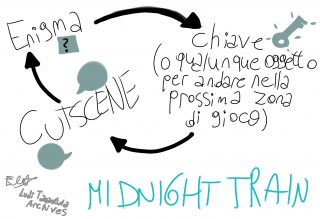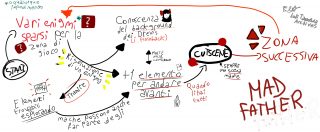It all started with “I know my father’s secret”, presented from the beginning with what we should have immediately understood as an exciting story intended for a large audience that willingly accepted to listen to it.
Here we are finally back after another couple of weeks in this section dedicated to trace, however approximate, a “story” of the Horror RPG. Yes, we know (for those who can remember at least) that we had initially set the date for June 14 but … Forgive us. At the moment, I speak as PaoGun, I am in the middle of the exam session and Eleonorada is alone with the production of our game, and each time these articles are becoming more and more demanding. I mean, guys, we’re talking about Mad Father.
You remember that, don’t you? Mad Father … Impossible not to have heard of it at least once for those who scroll in the category of indie games, but especially those who follow horror games “with a good story”. A phenomenal presentation card for the world of Horror RPGs.
Gentlemen, here it is serious, we are talking about a cult game.
The introduction at the beginning, the well-narrated events, the integration with the gameplay and the freedom of exploration that is proposed, the beautiful graphic relationship between maps and protraits (the images of the characters on the screen during a dialogue) we consider it the best HOR-RPG that has never been able to tell a story, and nobody nowadays – let’s say it, really nobody – has yet managed to steal the primacy.
That’s right, not even the Generation 2 games, the “Story-telling Focus”, as we called it.
So now, aspiring writers, screenwriters and developers, now open Word, hands on the keyboard and take notes from the “old” sen.
Product History
Guys what would you like me to say: Mad Father was the discovery, the tip of the HOR-RPG iceberg for a long and long time whose presence on the net influenced the discovery, of those who did not know them before, of Ib and The Witch’s House.
Here the “stardom” phenomenon, if we want to call it this, or the passion that has characterized players (and spectators) from all over the world of the Web that we have already introduced in the article on Ib reaches its peak and Aya Drevis appears in the engines of research inherent in his own game as an undisputed heroine of the events.
How did its journey start?
So, to begin with, we managed to trace back to a version of the game in which the project was still in development. A very interesting archive file offered by his Nicovideo channel (for the link to the video just click on the text).
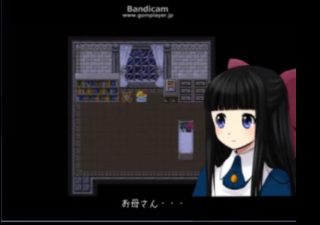
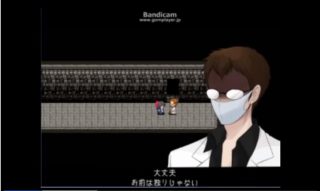
The video in question dates back to 11 January 2011.
You can already see a big difference compared to the maps shown in the 2012 release. The video seems to have about 14,000 views, it would be interesting to note if in this case the developing project had been followed from the beginning of the project or the explosion occurred only when the title was released and those views were made only after the game was already known.
Now, in 2011 Misao was released, a title that was known only later than Mad Father, what we ask ourselves and whether it will have helped to create expectations in a more restricted community of gamers or Japanese fans of horror titles.
In any case, the official release of the title is clear to everyone: December 10, 2012. It is very difficult to try to find the site where the download of the first version of the game that was made is in, what we found was still once a Freem page, although it does not seem to refer to the version of the game that we all know, but to the changes that began to be made starting from 2014.

Curious how sen seem to have removed the traces of the first version of the game, the historical one, with which we all began to become attached to the events that took place in Casa Drevis, also releasing a new free version of the game, 2.9.
It adds very few things: the ability to adjust the volume, changed potraits (basically the ones from the Steam version), and a very slight static effect which, really, we didn’t really need.
So if the new free version of the game is no longer the “complete and original” one, what has changed in the Steam version of the game?
 Aside from my (Ele) not exact understanding of the third point… The rest may seem normal, can’t it? Graphic improvements, better playability, relocated gems…
Aside from my (Ele) not exact understanding of the third point… The rest may seem normal, can’t it? Graphic improvements, better playability, relocated gems…
I think that Ines is Coron.
Here, the problems begin. Try to guess why I underlined this point …
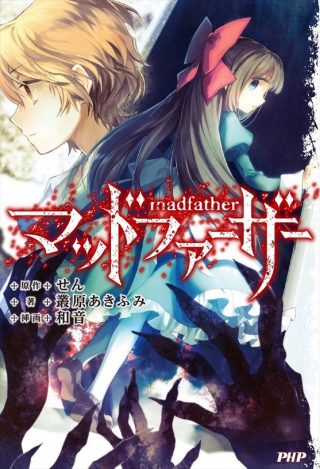
… After a season and a half of Back to the Future I’m losing patience.
A novel!? Again!? Ah, I’ll say: compared to Ellen’s Diary, this novel is even more useless. Like others we have seen in this section, it tells the events of the game with some additions here and there. Stop, just this. It doesn’t add anything.
Phew … Here, I wanted to get to this … Life is too short to read every page of every crappy (I’m sorry for the harsh term but, like I said, I’m really losing patience here) novel on this Earth… And also because it never came completely to the West (a girl on Wattpad was translating it, but she stopped after two chapters) but at this point you will have understood this sudden change of dialogues and the addition of the past of a character that we didn’t care about anyway…
Let’s say it all together:
Sen linked the game to the novel!
It may seem trivial as a phenomenon, but in this regard I ask you to remember The Witch’s House. How, even in a remake, has maintained its dignity unless you only play one particular mode. Here… We have the opposite phenomenon, what I think is a bad example of a remake for a Horror RPG: add elements introduced in the novel in the remake, without “any escape” for the development of the previous plot.
Sen doesn’t seem to have released anything else after the release (and possible patches, given the constant bugs and crash reports …) of the unpleasant Steam version of Mad Father.
So, unfortunately, from my point of view the story of sen’s cult game ends here, in the anger given by these damn commercial operations that, many times, worsen the product also in terms of quality.
But going back to its old glories, to how Mad Father grew before decaying in this way … What can we tell you about the history of its reception?



Sure. And this is also because:

Well, here the user can deal directly with a story. They can completely escape from his daily experience by living someone else’s, unlike the type of immersion that, if you remember, the titles of Generation 0 offered us.
The idea that Horror RPGs can be treated as “passive” audiovisual works seems to have come up here.
We have all the items in full:
– Characters who, with their particular design or characteristics, can attract attention
– Strongly distinctive environments with a well-defined design as well as containing horror features
– An intertwined story, in this case told as a “great film” designed for the big screen industry.
Mad Father has ceased to exist as only a HOR-RPG and has created its own reality, in which the protagonist has often been seen alongside the other heroines of the current that preceded her, in particular Ib, Mary (ah yes, Mad Father was so influential as to make believe that “Ib stole Old Doll from it”. We simply say that he was able to give the piece a precise personality), Ellen, Viola.
What better way to close the story of the reception of this title if not with these images that have spread on the net for a long time?
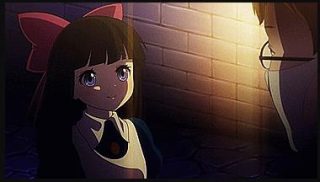
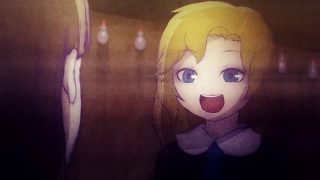
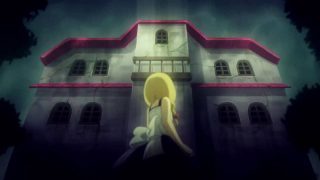
The fictitious trailer prepared for April 2014 by Mike Inel created false hopes for many, many spectators who would have been ready to follow the events of the characters beyond their games.

As you may have read in other articles, by now you know that the best narrative game perfectly integrates narration and gameplay, and everyone does it with their own style: in this Mad Father taught people a lot. But before talking about the trump card that refers to the “soap opera” direction and the dynamic method with which the story is narrated, I want to face an observation.
To be precise, I want to tell you one thing.
We really like Horror RPGs, and we don’t mind hunting for the latest news. This also leads us to follow pages of languages that we do not understand, for example it often happens (here PaoGun to the report) to find updates on a Home page of a Chinese Horror RPG Facebook page that constantly updates on new releases, any remakes and themed posts regarding the current HOR-RPG precisely. Let’s say it was thanks to them that we discovered that the author of Mogeko Castle is going to resurrect the “franchise” and bring us the spin-off he was talking about years and years ago, or the intention of the Buriki Clock to release a remake both on Cloé’s Requiem and Fantasy Maiden’s Odd Hideout, whose news has made us just a little bit angry but this is a speech that we will do in due course …
In any case … Let’s go back to the main topic.
This is just one example, the most recent one that I have found an eye on these days. For the rest I often see similar posts dedicated to titles that show characters drawn in a way that is more and more stylized in shape and at the same time always with more and more accurate details while the backgrounds and contexts in which they are placed seem to lose more and more importance, as if they were any novel in some ways.
If I have to be honest with you I don’t know these titles. I can’t judge them because I don’t know how they are made, but really, take a look even at the cover type of this, for example …

Guys, Mad Father was only the beginning.
These new types of authors who are emerging are really smart: what they try to propose is something that the spectators, players and the type of users (and therefore the target) in general to which it is addressed is the one accustomed to devouring packs of animated fiction works. These folks, are “ahead”, capable of creating a type of secondary market based on what the big production companies propose because they reason by imitation. In short, the alternative route to the majors has already arrived here.
I would say that the real and great challenge is right here: which of these can truly be considered a great game, unique in its kind and which, on the other hand, is lacking in quality when you get in touch with it? The “theory of survival and stronger products” is only part of the complex liberal thinking. The more numerous the competition is capable, the more the challenge to stay on the piece becomes ruthless and compelling, in an age like this increasingly rapid, always in the running, in which the entertainment industry has to deal with “comet” effect, as I call it at least. In a moment you shine in the firmament, high up and you reach the interest of millions of people but then just as quickly you fall back and everyone forgets what happened.
… If there are many products that are equally valid, each of which conveys a different feeling and its own identity, then we are talking about Golden Age. The eras that are most remembered with melancholy in the years that follow one another.
And speaking of golden ages … Do you know what was one of Billy Wilder’s ten tips, perhaps one of the greatest screenwriters in Hollywood?
The viewer must be taken by the throat from the first five minutes of the film.
And that was what sen (or Miscreant’s room) did …

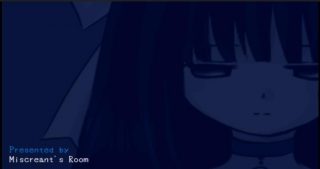
Besides, guys, how can you not get caught up in these opening credits? “Old Doll” by Amacha Music Studio in the background and images of a house and a full moon that take us by the hand before starting the adventure.
What I’m referring to is in particular the introduction to the story, the scene in the basement.
So let’s look at the way in which the main plot and the sub-plot concerning Maria are exposed: surely everyone will remember these words, “I know Dad’s secret”.
We have a cut-scene, so the action is immediately introduced. Mind you that the events are exposed in a very clear and concise way and all shown on the scene:
1) Aya knocks on the door, and when Alfred replies, the anniversary of Aya’s mother death is introduced (which, for those who remember the game, will be a recurring theme regarding the origin of the curse and will also return to the finale).
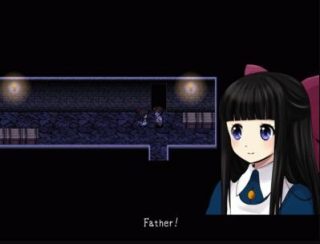
2) Alfred, the girl’s father, immediately returns to the room from which screams and a chainsaw can be heard, sounds that Aya ignores, despite having heard them.
3) Aya’s narrative voice on the off screen tells us right away about what her father is up to, we know that we are dealing with a madman, therefore it reflects what the title was so descriptive, and is also introduced the plot about Maria as the parent’s lover just after the girl’s mother was mentioned in the scene.
You understand that already with this type of introduction we have in our hands a myriad of information, proposed in such a dynamic and scenographic way that we can only wish to have more to know what will happen next. In this case, the protagonist’s goal is to save her father from the revenge of the people he killed, or so it seems at the beginning.
The figure of Ogre is introduced, which, following the scream that the girl hears in the middle of the night, explains how things are: zombies that go around the house waiting just to make the cheerful surgeon into small pieces.
Let’s take a little break from the plot to talk about Aya.
Such a character, Aya.
In short, in Ib we had characters who wanted to remember an archetype. The parental figure, infantile vivacity and innocence (Mary and Ib were two sides of the same coin for short). In The Witch’s House there was “simply” the whim of a young girl with an evident empathic disorder that does not follow any moral principle.
Here we can already have a binary reading of the character of Aya: on the one hand the suffering of others, on the other the affection for the beloved father.
The situation that the girl is facing allows us to look at her in a really interesting way. Her bottom line is only a path of growth from childhood (taking care of her ego, family needs and loneliness), to what she would like to reach as a mature state. We all know how it ends, but despite this it is also interesting to note how zombies try to move their compassion as if they took it for granted that a girl, because only eleven years old, was the face of innocence.
You can guess from the end of the game how in reality her “growth path” has deviated, just to start with the anecdotes that are shown to us when he gets his small personal chainsaw. An ending that, after all, is more than natural and that correlates well with what Aya’s experiences have been.
“It’s not fair to make people suffer like this!” Shouts the game, Dio, the zombies, and in some ways tries to make them understand even Ogre.
“Indeed! Morphine is much better! “ adult Aya replies.
This Aya does not have the same sadism as her father, the real sick side of enjoying the sufferings of the patients.
After all, she was a little girl who loved dolls and animals; “Beautiful things”, “colorful and cuddly things”. But often heard screams at night.
Simple: people’s screams have traumatized her, she doesn’t want to hear any more. How do you think a little girl could grow up in that kind of environment? Ten years is still ten years.
We leave out the clues shown during the flashbacks that reminded us how Aya sliced numerous rabbits without realizing it and therefore we go beyond genetics, which for charity may also have influenced the girl’s behavior, but what I consider even more appropriate to support is that the childhood experiences that are recorded above all on the unconscious level, since it is still difficult for a rational thought to develop, unfortunately count a great deal in the life of an individual and as trivial as it seems to say for me, they contribute in the types of attitudes that develop as adults .
There was someone at the time who was disappointed with the ending: did they want Aya happily ever after in a country house with Maria?
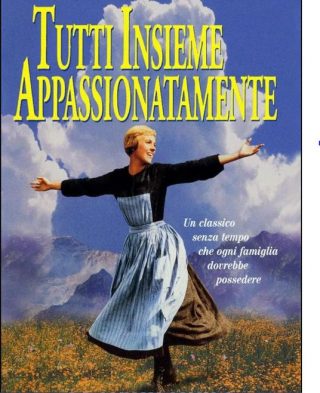
(The image is there for a joke because of the Italian title of the musical “The Sound Of Music”, which from Italian can be translated in “All Together With Love”)
I consider it a very natural ending, logical, which fits well in the thread of the speech and as far as I am concerned it could not be different from what it was shown.
Indeed, I admit that I am quite frightened by the premises that were made in the “If”, in which a return of Dio was assumed that “he would have done something” in the event that “Aya would become like her father” and how many fans felt enthusiastic about this choice.
But neither was Aya the problem as much as this other guy here, Dio (means “God” in Italian). Jesus (yes, it was a joke), we have always been told that this guy was a corpse!
Maybe he’s “not dead” because “Hey, he just took one eye off of him!” I imagine that you can die for many reasons: bleeding to death, maybe. If I am not mistaken, a cause can also be the excessive endurance of pain caused by a type of nervous tension and so on. We all know how Alfred works. But this is not the most serious problem.
It would have been more logical to know, unlike what Ogre later said “I cured you because good people like you highlight mental patients” (okay, calm down Mr. Clean) how, after Maria’s stab wounds, Dio returned to life simply because … Well, it’s a living corpse because of a spell! A curse, call it what you like.
There would have been no need for an explanation like this that only forces you to see a forcing in the game.
But, after all, here we are talking about an extra, a parenthesis on the main story that touches more other paragraphs of the article than this and which we will be able to discuss later, also this, in the author-work relationship.
Indeed, given that we are talking about the Trump Card, here again we have a perfect combination of storytelling and gameplay, if not one of the best there has ever been. But before passing the word to Ele and getting carried away by her in the Mad Father gameplay, let’s discuss for a moment about the final scene for which we were so trampling about the famous “soap opera” direction we wanted to talk about.
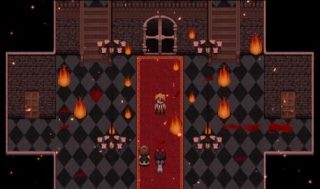
Here we are. The flames, the epic music with the Latin choirs that accompany us in this closing mega-scene.
There is nothing better than proposing the spectacular scenography to get viewers involved in the finale, sen seems to tell us this. Here are the latest recommendations made between characters and promises for their future.
It is certainly not only at this point that we can talk about the directing, you have also seen it from the image we chose for the cover of the article. Maybe sometimes too much “drama” as it is an easy way to attract attention…
To tell you, between this type of direction and the Corpse Party Blood Covered one we continue to prefer the latter, with its slowness in making you assimilate events.
During the exploratory phase of the game, however, this rather heavy direction is not there: it is “relaxing” even if every event and obstacle that you face has its stage presence and importance (for example the dog that swallows the key, which hear since you are in the kitchen with its constant and repetitive sound effect). There is, therefore, a very dynamic approach to puzzles and pushes you to go deeper and deeper into the basement.
Speaking of puzzles … How is Mad Father doing with those in general? From cases like Midnight Train we have seen that doing this, if the game is extremely narrative, it is really a challenge not to make the puzzles just a filler so as not to go on in the story too quickly.
… But Mad Father did it.
In addition to the controls, which I want to make a special mention being this among the games in which I find myself best, moving in all eight directions and above all in a very fluid and fast way (there is also to compliment those who created the engine , WOLF RPG Editor) … After the first few minutes in Aya’s room in the initial cutscenes (including already a flashback), as soon as we know of the curse we are faced with the very first puzzle after taking the key from the archives from the bedroom and a strange sheet from the above said room…
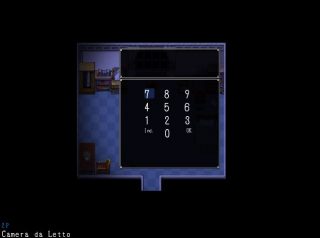
Okay, there is a code, let’s go to the rooms written in the sheet, let’s explore the house for a moment …
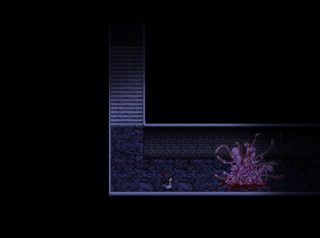
No, wait, we have to destroy that first… Kay, let’s go on…
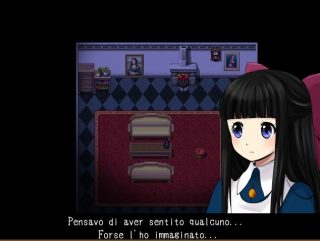
“I think I heard someone… Maybe I imagined it”
No, wait, we have to see who is the voice in the reception room…
Wait, what’s the very first puzzle …?
Here, who knows the game, or explores the rooms in the correct order says “Yes, first comes the safe, then the other two” , yeah?
Sen, however, has decided to present them all in the first few minutes of “effective” gameplay, so that the player has a good amount of things to do from the beginning, which keep them attached to the screen: even if they has solved a puzzle, they already know that there are thousands more to solve! You can explore almost the whole house in the first few minutes, only the basement is blocked. The game does not force you to go to certain places or not: the player can decide to not open the safe right away and go directly to the bathroom, where they will have the key to the dining room, and go directly there, but after discovering the trap door, they’ll take the oil but, finding themself without any lamp or anything to use it, will remember the safe and the sheet and they’ll say like “Oh yeah, maybe there’s something there!”
As in this case, those times that the game prevents you from moving forward, it is not because you have to do one thing first rather than another: you simply have to have all the elements that can make you proceed, which you can take in the order you prefer. A far from forced gameplay that makes this title always interesting and timeless.
Remember what I said about Midnight Train, right? Remember how I said that in that game the gameplay was a mere outline to the cutscenes? Here we have quite the opposite, the scheme totally changes.
…In fact, let’s go back to school for a moment, let’s just draw two schemes on how the gameplay of the two games is structured.
Little premise: in both titles there are phases and phases, which sometimes break the patterns that will be described below, but these are the combinations that we find most often in Midnight Train and Mad Father respectively.
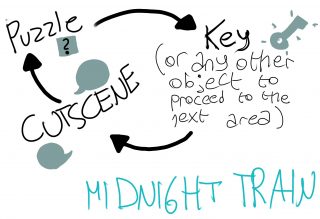
……..
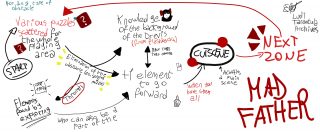
Already from the length of the schemes you can understand which game has the most complicated gameplay.
Another advantage that Mad Father’s puzzles have is their good correlation with the plot, or with the rooms (except for some parts in the basements, for example the twin rooms).
So, in addition to the depth of its “played areas” (and this I write also in the face of those who, improperly and not considering the game in its genre, defines the gameplay of Mad Father “shallow”) when the player… Plays, he at the same time they never detach themself from the plot.
The puzzles are always connected in some way to what we are experiencing: to the reality that was the Drevis family, to the work of Aya’s father, to the curse … We never feel that the narrative abandons us to let us play for a moment and then resume in the cutscene on duty. We always have something new to discover, in the colossal mansion of the Drevis family.
In all this I add an observation: why in the gameplay was it possible to “allow” to add so many pieces of flashbacks and insights concerning the characters of the story in order to make us become attached? Because the main story was already explained in the first ten introductory minutes! This was the brilliant move.
The context and the main information we had to know were shown to us before, combining direct exposure on the scene (on-screen) with the off-screen in a dynamic rhythm precisely, so that the information on the context discovered in the gameplay were never something that could completely distract the player, this makes the game session richer and above all free to deal with the puzzles and insights on the environment that is being explored.
I could really be for hours writing about other merits of Mad Father’s gameplay, but I prefer not to take your time and I end up saying that it is precisely this that makes Mad Father one of the most well-thought-out gameplay games of all times and generations…
But are we sure that the relationship between sen and his work, mentioned in the Product History, is idyllic?
Professionality Meter

We are almost there.
No, we still do not return for the moment to Corpse Party’s levels… But after all the magnificent qualities that we have exposed and the cutting edge of the current on the speech of marketability I would say that Mad Father really deserves such a high level!
Packaging
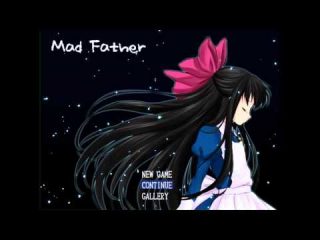
Nothing new to say compared to what we have already noted above. The design style seems “dry”, there are no particularly bright colors or hues.
The protagonist drawn in anime style covers most of the screen, yet we could still notice the way her hair flutters while what has been defined as “flipped” snow that flies around it.
Yeah, speaking of “drama” we have already talked about: it seems to be a recurring feature in the CGs of the game, the extremely exaggerated spirit with which our favorite characters pose like an Indian soap opera.
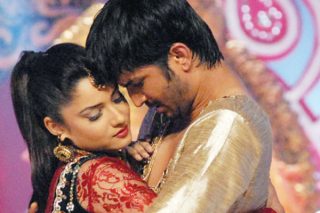
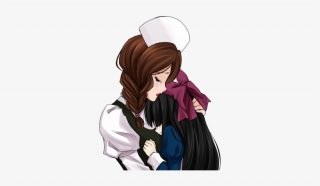
For the rest we can only consider how the relationship between potraits and maps on the screen is well composed and elegant, the shades of blue are recurring throughout the game and the overall compositional balance is in our opinion excellent.
author-work relationship
Even sen, like Fummy, has decided to try several times to give the game more possibilities and re-propose it in various sauces, from remakes to novels. In this case he (we think it’s a “he”) aimed to always add new details for the plot, from the IF to the remake with Coron’s story (which adds nothing to the main plot and not even to the issues addressed!), Realizing that he had created a narrative universe with a lot potential to exploit it commercially …
… Even at the expense of the quality of the product itself.
It is true, in the history of the product and in a part of the Trump Card we seem to have been a little bit sour when we talked about the novel and the remake, but perhaps there are reasons behind sen’s behavior.
– Misao, “Find me” –
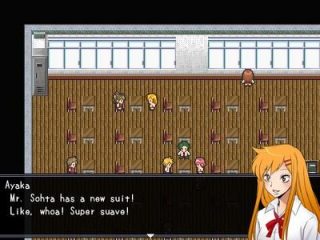
Here we are. Today, exceptionally, we open a small parenthesis on another game within the paragraph dedicated to the author-work relationship.
School setting, first dialogues in which the friend of the protagonist is known and transport of the whole school to the afterlife on behalf of the curse launched by Misao, the goal of the research of our protagonist Aki.
We had anticipated it in the history of the product: Misao was released a year before Mad Father. Yet you want to know what’s the really ironic thing?
All the theories that Aya saw in the Miss Library, the questions about “Alfred’s purple hair” and the “Aya clone” that is seen only at the end of the Mad Father game.
So … Given the release order, I would venture to say at this point that this is not Aya’s clone, but “Miss Library” was probably Aya’s prototype, to promote the future game that sen had in development of which we have seen the first maps on Nicovideo.
Probably without the boom unleashed by Mad Father this game would not even have been discovered, although the plot also seems to follow a classic and linear approach on a narrative level and also the relationship between narration and gameplay seems to resemble and integrate wonderfully in the same way.
Let’s move a moment, because with Ele we found in the course of our research, a few months ago, a particular title from sen’s portfolio hanging out on VgPerson ‘s website.
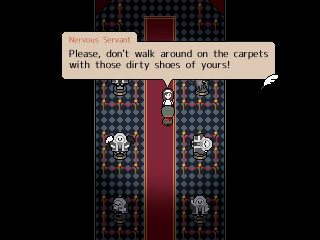
Do you know what our first impression was on this title? That would have been a great console game.
A personal and increasingly multifaceted style, new atmospheres, ingenious puzzles and new mechanics.
… Guys, let’s get to the point, how many of you knew the existence of this game?
For us the total indifference towards this title represents an even more serious case, since it deviates even more from the game genre that were Mad Father and Misao. A game that was not considered by the general public only because it has adopted a language and types of atmospheres that users have not been able to recognize, and this is certainly discouraging in some ways.
It seems as if the only types of games able to survive beyond a smaller and strictly determined community were the narrative ones, which must be able to attract attention as it happens among today’s audiovisual works, which as Christmas trees must be on the lookout for ever more striking lights to attract the curiosity of web users between scrollings.
It is here that we can see, as sad and depressing as it is for an author (this is what we would feel putting ourselves in his shoes), the result of a loyalty not premeditated since the first distribution of a product.
The game goes on by itself, but there is no real attention towards who made that title; here it really seems to start to feel the weight of “games born by chance” also for what concerns only the single titles. Here you can feel the chains that seem to anchor these titles to an authorial nature and environment that could take off.
work defects
As for the defects … We can introduce the topic with a premise that recalls the words we wrote on The Witch’s House. They should not be considered as a real title penalty: the decision of the type of game that wants to be Mad Father is very stable and its personality is strong and compact.
We want to expose the defects we are going to talk about as a push to do more.
I could be here talking about Alfred himself for example, of how he always and only sees himself with this dark eyes (like a shadow on his forehead) and thick glasses that never show us the direction of his gaze and how these characteristics always prevent us from seeing him as a dad.
It is true that he is a “crazy father”. It is literally the mad scientist that B-movies always put in horror works, slashers and associated parodies. But if it is true that he is also a father, why is he never shown to us as such?
As far as we know, the reason why he tried to prevent Aya from using the chainsaw could also be that he didn’t want “his doll to get his hands dirty and remain pure and innocent”, in a sort of fetishism.
I could also mention other characters, but Alfred in this sense is the most emblematic character to introduce a more important speech: he is the “villain” of the game, he gives the name to the title. It is just one of the examples, in this case approaching the characters, to talk about the level of depth of a creative work and which generally goes alongside the main plot that is narrated.
But what is the level of depth?
Simply the sum of the reading levels that a creative work offers and its presence in our case can distinguish in our opinion a “nice game” from a great game.
To aim higher, to types of high concept products that then become part of popular culture.
This, I repeat, does not want to be an objective defect (in flashbacks, we just need to know that we are from Aya’s point of view, that she sees it as a parental reference point) but a push to seek constant improvement also for the games to come.
This speech will then be treated towards those who, while following the intentions of a commercial work, who have achieved a disastrous result even in the construction of the main plot.
Okay, in short when we get to Angels of Death we will talk about it in a more articulated way (taking into consideration what was a great animated work to make comparisons, but we do not anticipate anything else at the moment). In any case, we don’t think it right to go into the discussion in this article.
We can only conclude by stating that the complexity and beauty of a work is also and above all defined by the multiplicity of interpretations that can be extrapolated. The clarity of the main plot is essential and the preferable starting point to trace the main path, but from there every user interfaces must feel the power to be able to build their own deviation.
Conclusions
And these, ladies and gentlemen, were the three masterpieces of the First Generation. Those who have opened the way to all the titles to come, the latter being immediately categorized by users and recognized in what seemed to be an almost established current that is that of the HOR-RPG.
As you are starting to notice, the production dynamics themselves are becoming more and more complicated, and we hope to make you understand them better in this journey in our very personal time machine.
It is in the next article that we will almost seem to make a small leap backwards: the scenography loses its surrealism and “pomposity”, returning to everyday everyday reality in a game dealing with the events of an “ordinary man”. For a moment, the ghosts of Generation 0 are savored again in The Crooked Man from the Strange Man Series.

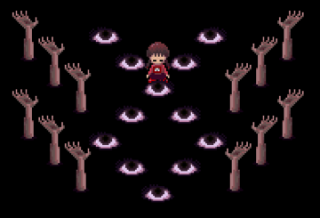

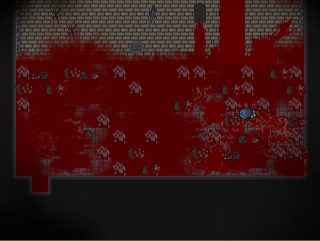
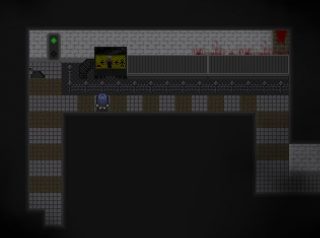

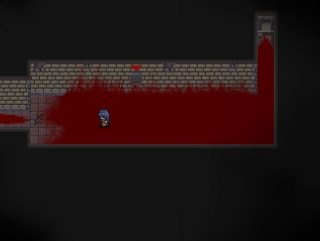

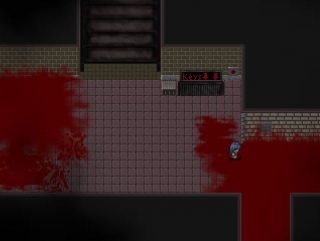
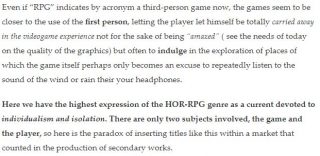
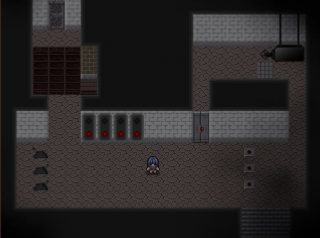
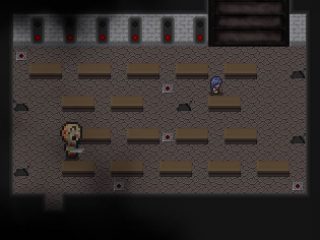
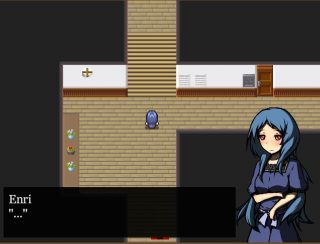

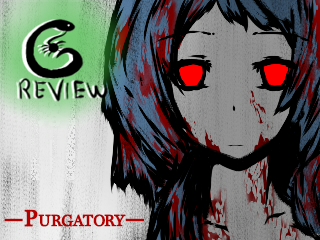
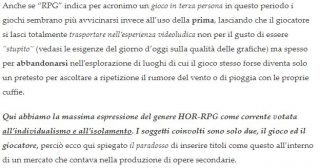
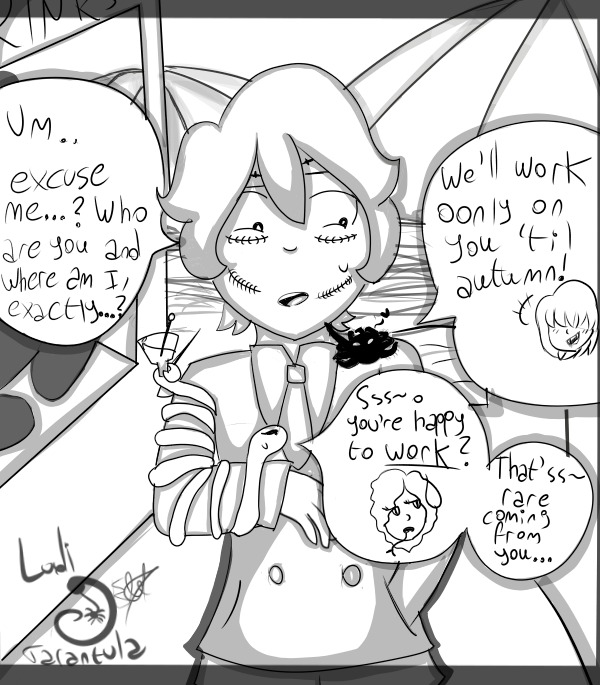



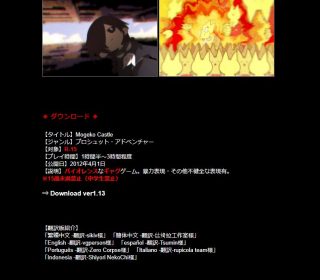





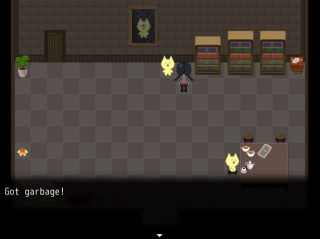

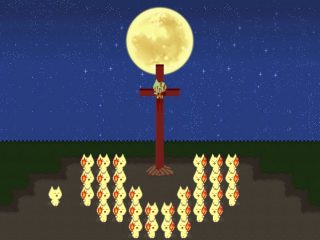



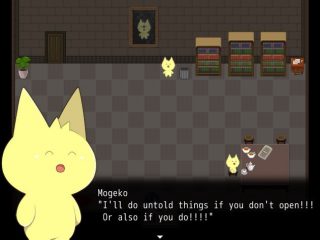
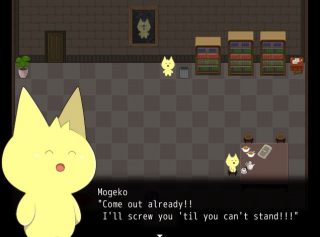
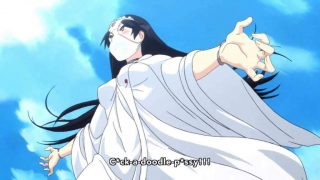
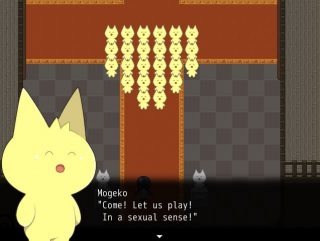
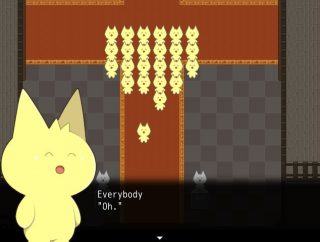

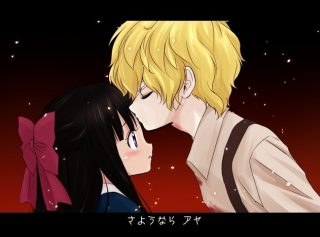
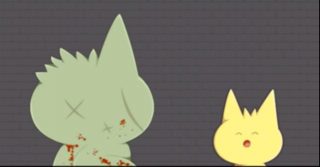
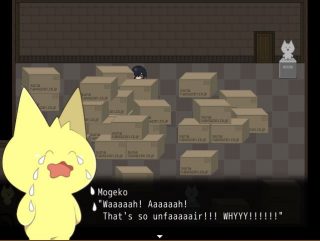
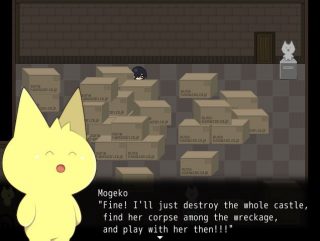



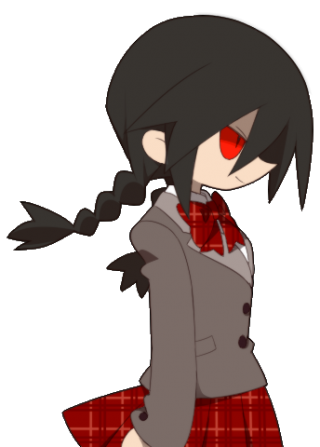
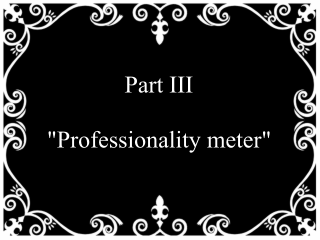
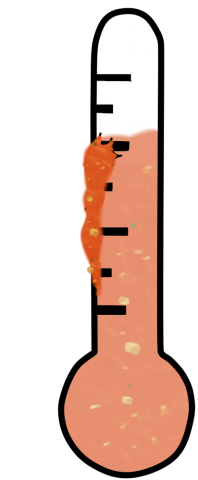

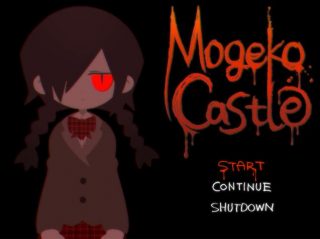

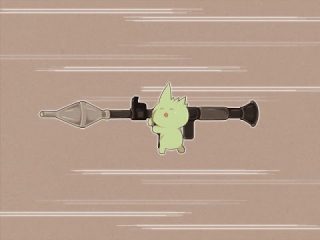
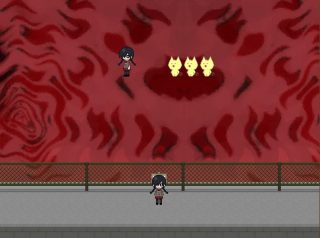

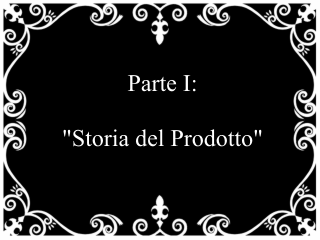
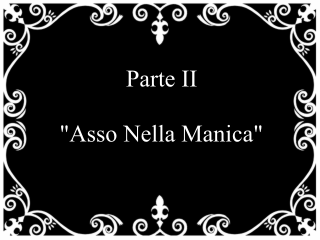
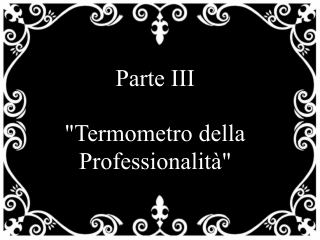
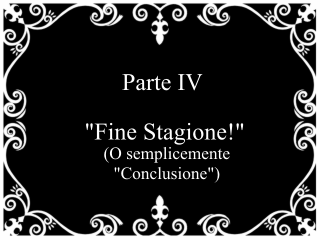
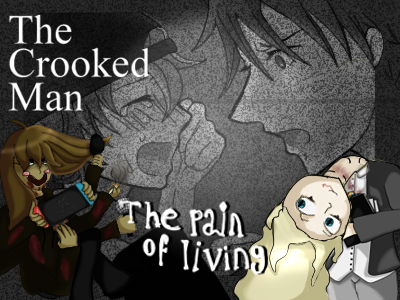
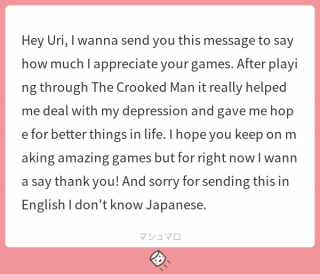

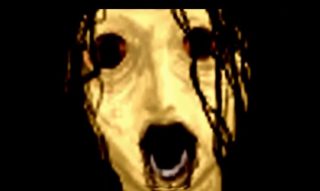

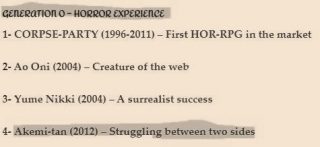

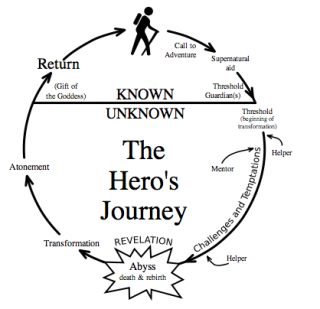
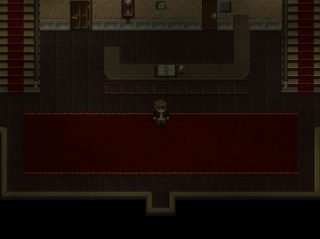
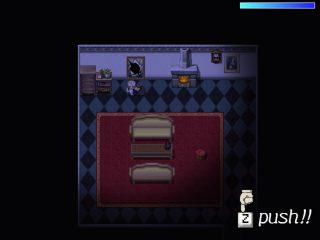
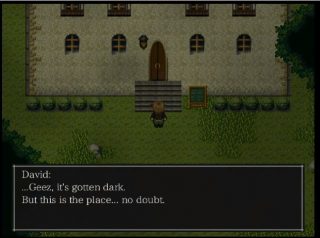
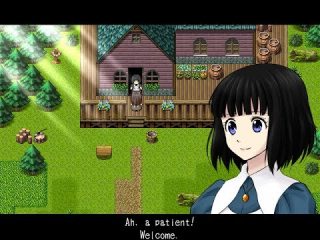
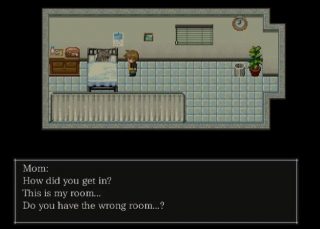
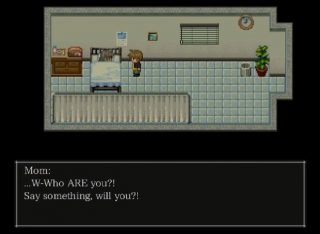
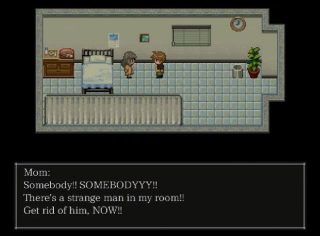
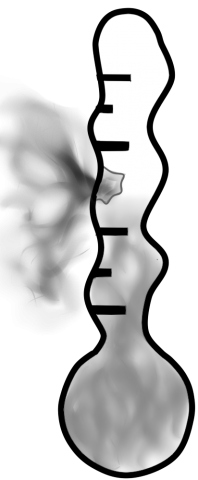
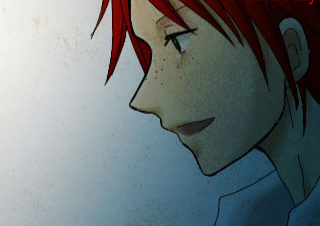 The title screen is in black and white with the monster on the side, it looks almost merged with the black background.
The title screen is in black and white with the monster on the side, it looks almost merged with the black background.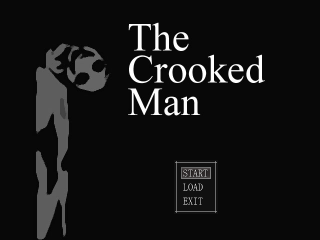
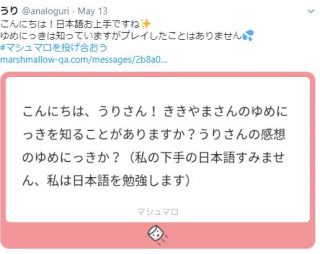


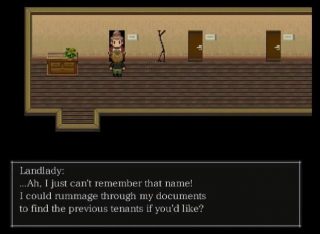
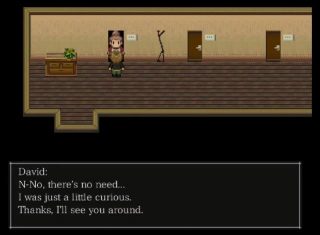



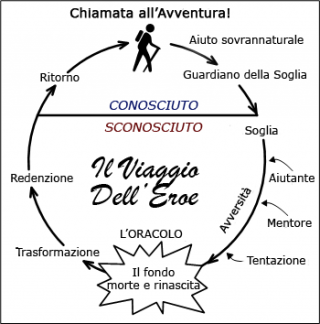
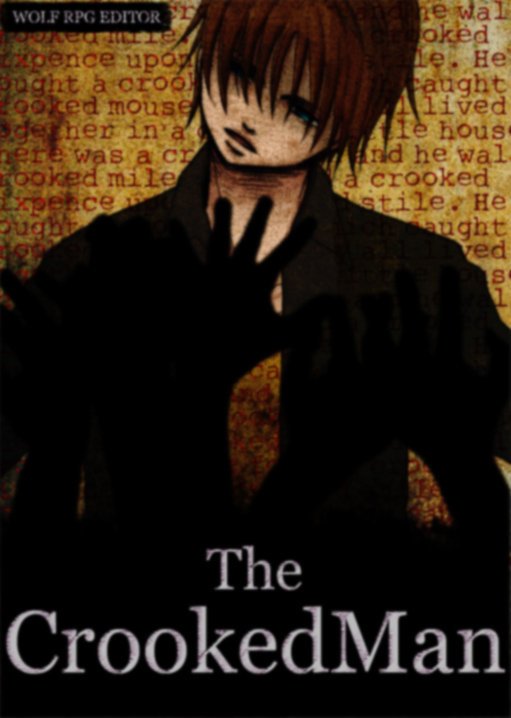
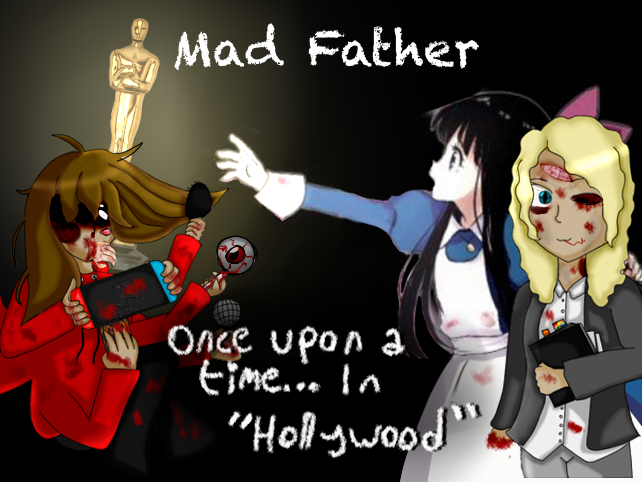



 Aside from my (Ele) not exact understanding of the third point… The rest may seem normal, can’t it? Graphic improvements, better playability, relocated gems…
Aside from my (Ele) not exact understanding of the third point… The rest may seem normal, can’t it? Graphic improvements, better playability, relocated gems…


























